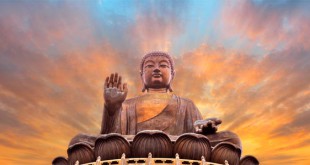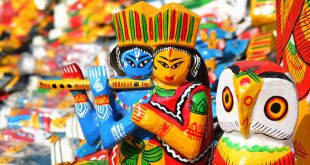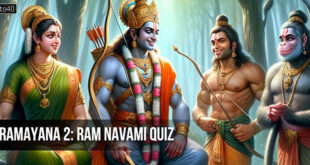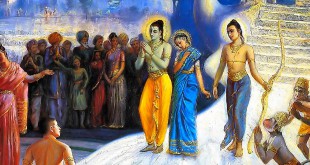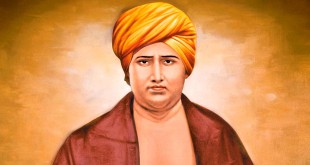Jharkhand Foundation Day Quiz: This year marks the 24th anniversary of the Jharkhand Foundation. Test your knowledge about one of the youngest states of India with the below quiz.
Jharkhand Foundation Day: Every year November 15 is observed as Jharkhand Foundation Day. The day commemorates the formation of Jharkhand as an individual state of India. It highlights the long struggle for identity and regional autonomy by the tribal communities of the region. The foundation of Jharkhand was an important milestone in fostering development, preserving tribal identity, conserving natural resources and promoting a diverse populace with good governance and recognition of distinct cultural heritage and socio-economic aspirations.
Jharkhand Foundation Day Quiz For Students
On the occasion of Jharkhand Foundation Day, test your knowledge about the land of forest, Jharkhand.
Question 01: Birsa Munda, a tribal freedom fighter, belonged to which tribe in Jharkhand?
- Santhal
- Oraon
- Munda
- Ho
Answer 01:
Explanation: Birsa Munda belonged to the Munda tribe of the Chota Nagpur Plateau of Jharkhand.
Question 02: Which movement led by Birsa Munda protested against the British and landlords’ exploitative policies?
- Swadeshi Movement
- Bhoodan Movement
- Chuar Revolt
- Ulgulan Movement
Answer 02:
Explanation: He ignited the minds of the masses to join the “Ulgulan” (great tumult) or revolt against the colonial power.
Question 03: What is the birthplace of Birsa Munda?
- Ranchi
- Chaibasa
- Khunti
- Gumla
Answer 03:
Explanation: Birsa Munda was born in Ulihatu, a village in the Arki CD block in the Khunti Sadar subdivision of the Khunti district in the Indian state of Jharkhand.
Question 04: In which year did Birsa Munda pass away?
- 1900
- 1905
- 1909
- 1915
Answer 04:
Explanation: Birsa Munda died on June 9th 1900 while lodged at the Ranchi jail aged just 25.
Question 05: The Ulgulan Movement led by Birsa Munda primarily aimed at:
- Land reforms
- Religious reforms
- Tribal rights and autonomy
- Industrial development
Answer 05:
Explanation: Birsa Munda wanted to reform the tribal community.
Question 06: Which commission was responsible for the formation of the state of Jharkhand?
- Dhar Commission
- Simon Commission
- Sarkaria Commission
- Jharkhand Commission
Answer 06:
Explanation: In 1929, the Simon Commission was submitted with a memorandum in which there was a demand for the separation of the state of Jharkhand.
Question 07: The Jharkhand region was historically known for its rich reserves of:
- Diamonds
- Gold
- Coal
- Bauxite
Answer 07:
Explanation: Jharkhand is rich in mineral resources such as coal, iron ore, copper ore, uranium, mica, bauxite, granite, limestone, silver, graphite, magnetite and dolomite.
Question 08: When was Jharkhand officially established as a separate state of India?
- 1999
- 2000
- 2001
- 2002
Answer 08:
Explanation: Jharkhand became a state under the Republic of India on November 15, 2000.
Question 09: The Jharkhand Mukti Morcha (JMM) was founded by:
- Shibu Soren
- Babulal Marandi
- Arjun Munda
- Hemant Soren
Answer 09:
Explanation: JMM is a political party in the Indian state of Jharkhand which was founded by Binod Bihari Mahato.
Question 10 – Jharkhand Foundation Day Quiz: Which city serves as the capital of Jharkhand?
- Dhanbad
- Jamshedpur
- Ranchi
- Bokaro
Answer 10:
Explanation: Ranchi, in its modern form, is the capital city of the Indian state of Jharkhand.
Question 11: The majority of the population in Jharkhand is primarily engaged in:
- Agriculture
- Mining
- Manufacturing
- Services
Answer 11:
Explanation: After mining, most of the population in Jharkhand enjoys Agriculture.
Question 12: What is the meaning of the term ‘Jharkhand’?
- Land of rivers
- Land of forests
- Land of hills
- Land of minerals
Answer 12:
Explanation: The word “Jhar” means ‘forest’ and “Khand” means ‘land’ in various Indo-Aryan languages. Thus “Jharkhand” means forest land.
Question 13: Which of the following states does not share a border with Jharkhand?
- Bihar
- Madhya Pradesh
- Chhattisgarh
- West Bengal
Answer 13:
Explanation: Jharkhand doesn’t share boundaries with Madhya Pradesh.
Question 14: The tribal festival ‘Sarhul’ is mainly celebrated by which tribal community in Jharkhand?
- Munda
- Oraon
- Ho
- All Of The Above
Answer 14:
Explanation: It is celebrated by the Oraon, the Munda, and the Ho tribes, of the Jharkhand region.
Question 15: The Jharkhand Legislative Assembly consists of how many seats?
- 81
- 87
- 90
- 95
Answer 15:
Explanation: It comprises 81 members who are directly elected from single-seat constituencies.
Question 16: Which mineral is the primary contributor to Jharkhand’s economy?
- Coal
- Iron ore
- Copper
- Bauxite
Answer 16:
Explanation: The deposits of Coal, Iron ore, Bauxite, Uranium, Limestone, Dolomite, Pyroxenite, Quartz and Quartzite are available in sufficient quantity.
Question 17: The Chota Nagpur Plateau, a prominent physiographic region in Jharkhand, is known for its:
- Dense forests
- Rich mineral deposits
- Extensive river systems
- High mountain peaks
Answer 17:
Explanation: The Chota Nagpur Plateau is known for coal, iron and manganese deposits.
Question 18: Which national park in Jharkhand is known for its tiger population?
- Palamu Tiger Reserve
- Betla National Park
- Hazaribagh National Park
- Dalma Wildlife Sanctuary
Answer 18:
Explanation: The Palamau Tiger Reserve is one of the nine original tiger reserves in Jharkhand, India and the only one in this state.
Question 19: The literacy rate of Jharkhand is closest to:
- 60%
- 70%
- 80%
- 90%
Answer 19:
Explanation: The literacy rate in Jharkhand has seen an upward trend and is 66.41 per cent as per the latest population census.
Question 20: Which river is not a part of the major river systems in Jharkhand?
- Damodar
- Subarnarekha
- Mahanadi
- Son
Answer 20:
Explanation: Jharkhand is home to numerous rivers, with the prominent ones being Ganga, Damodar, Subarnarekha, Koel, Sakri and Son.
 Kids Portal For Parents India Kids Network
Kids Portal For Parents India Kids Network

